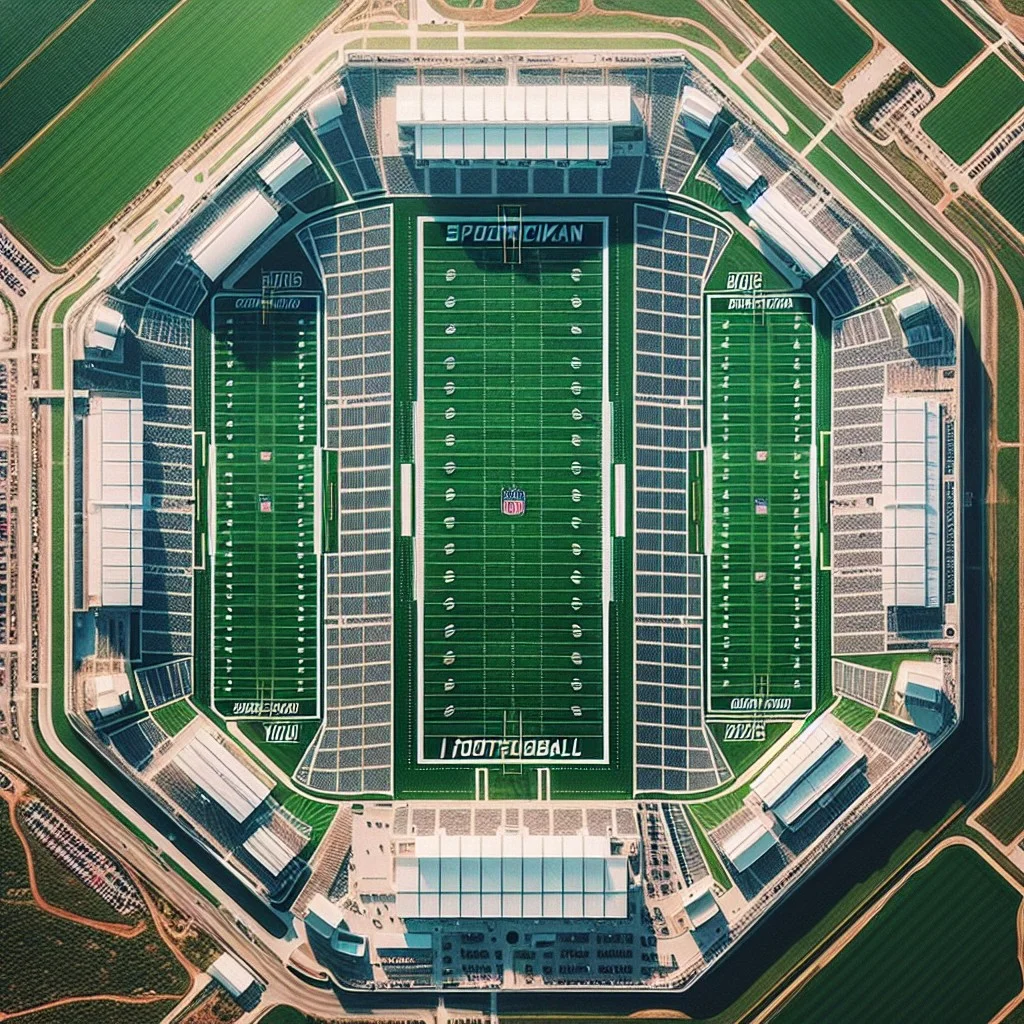Last updated on
Embarking on a journey through the world of land measurements, we will uncover just how vast an 80-acre piece of land truly is, equating it to familiar objects, places, and spaces for easy understanding.
Key takeaways:
- 80 acres is equivalent to 3,484,800 square feet.
- It’s more than 60 times the size of an American football field.
- 80 acres can fit approximately 766 average-sized American homes.
- A square of 80 acres would have sides that are one mile long.
- In international units, 80 acres is roughly 32.37 hectares.
What's Inside
Understanding 80 Acres in Square Feet

Grasping the magnitude of 80 acres can be challenging, so let’s break it down into a more familiar measurement: square feet. One acre equates to 43,560 square feet. Multiply that by 80, and you have a whopping 3,484,800 square feet.
To put that into perspective:
- It’s more than 60 times the size of an American football field, including the end zones.
- It’s akin to the footprint of 766 average-sized American homes, considering the average new home is around 2,400 square feet.
- Visualize a grid of roughly 1,872 by 1,872 feet – not something you can cover on a casual stroll!
By converting acres to square feet, we bring the concept into a realm that relates more to everyday encounters with space and dimension.
Visualizing 80 Acres: Football Fields Comparison

Imagine the roar of the crowd and the bright stadium lights—that’s the environment of an American football field, which covers roughly 1.32 acres, including the end zones.
Now, think of not one, but about 61 football fields neatly lined up next to each other; this expansive stretch is what constitutes 80 acres.
It’s a unit of measure that paints a picture of sprawling fields, where you could almost imagine 61 football games being played simultaneously.
To put this scale into perspective, consider a high school that’s just invested in a new athletic complex.
Typically, such a complex might include a football field alongside a track.
Yet on 80 acres, you could theoretically build an entire sports facility with multiple fields for football, soccer, track, and still have land to spare for parking and amenities.
A vast green canvas, 80 acres offers the space for thousands of players, coaches, and fans to enjoy a plethora of sporting events, all under the umbrella of one considerable tract of land.
Acres in Miles: Length and Width Calculations
When picturing 80 acres in terms of miles, precision is key. An acre is defined as 43,560 square feet. To find the square mileage, you’d divide the total square footage of 80 acres (3,484,800 square feet) by the number of square feet in a square mile (27,878,400 square feet). This results in approximately 0.125 square miles.
To better grasp this size, let’s consider linear measurements, assuming the area is a perfect square. If you take the square root of 80 acres converted to square feet, you get 5,280 feet, which is exactly 1 mile. Therefore, each side of a perfect square of 80 acres would be one mile long. However, land isn’t always neatly divided into squares. An 80-acre rectangle could, for instance, be 0.5 miles (2,640 feet) in width and 2 miles (10,560 feet) in length.
Keep in mind, the shape of the land can significantly change these dimensions, but these are useful benchmarks for visualizing the vastness of 80 acres in terms of miles.
Agricultural Context: How Many Football Pitches Fit in 80 Acres?
Diving straight into the agricultural context, let’s consider the size of a standard football pitch. Typically, a football pitch spans about 1.32 acres. How does this translate to our 80-acre expanse? We’re looking at approximately 60 football pitches snugly fitting into this vast patch of land.
This isn’t just an interesting trivia fact; it helps farmers visualize and plan land use efficiently. Imagine sowing crops or grazing livestock; you have 60 football fields’ worth of space to work with. That’s enough room for diverse crop rotations or a large, contented herd of cattle.
Moreover, using the football pitch analogy simplifies land management tasks. A farmer could potentially divide the 80 acres into zones based on the number of pitches, thus creating a system for crop rotation or grazing schedules without getting entangled in complex acreage calculations.
Visual comparisons like these are more than mere measurement translations; they’re practical tools for landowners to grasp the scale and potential utility of their property.
Development Context: Potential Housing Development Capacity On 80 Acres
With 80 acres at your disposal, the possibilities for housing development are vast. Typically, a standard-sized suburban home lot is about a quarter of an acre. This means that, in a perfect world where space is maximized, you could theoretically fit up to 320 homes on 80 acres. However, this number doesn’t take into account essential components of a neighborhood such as roads, parks, and communal spaces.
When planning for housing, developers often allocate about 20-25% of the land to streets and sidewalks. Moreover, considerations for utility easements, stormwater management, and green spaces lead to further adjustments. The density of the housing also significantly impacts capacity. High-density housing, like apartment complexes, can accommodate many more units, while lower density, single-family homes result in fewer houses.
To put this into perspective, a developer might choose to build a mixed-use community with single-family homes, townhouses, and multifamily units. A balanced approach might yield 100 single-family homes, 50 townhouses, and a 120-unit apartment block, diversifying the community’s living options and optimizing land use.
The exact capacity also hinges on zoning laws and local regulations that dictate the type of buildings allowed, the necessary spacing between them, and the maximum building height. Public sentiment and market demand play crucial roles in shaping the final development plan, ensuring that the community developed not only fits within the 80 acres but also meets the needs and preferences of future residents.
Recreational Use: Number of Standard Parks Equivalent to 80 Acres
When you think about 80 acres dedicated to leisure, it’s akin to stepping into numerous oases of greenery, with enough space for every imaginable outdoor activity.
On average, a city park spans about 10 acres, so 80 acres would be equivalent to eight such spaces.
Picture eight sprawling lawns for picnics, vibrant playgrounds for children’s laughter, and serene walking trails shaded by mature trees, all pieced together into one vast recreational haven.
Adjoining sports facilities for soccer, tennis, and basketball could occupy a fraction of this, and there’d still be plenty of room for meadows or small lakes inviting wildlife to thrive alongside human activity.
This multi-use potential turns 80 acres into a canvas for community bonding, wellness, and environmental appreciation.
Whether designed as one grand park or several smaller gems, the recreational possibilities are as vast as the land itself.
Mapping Out 80 Acres: Using Technology for Precise Land Measurement
Modern technology has revolutionized the way we measure land, offering precision that was once unimaginable. GPS-based mapping applications have become essential tools for accurately plotting boundaries and understanding the dimensions of any property, including one that is 80 acres in size.
When embarking on a quest to map this amount of land, software like GIS (Geographic Information System) can layer spatial locations with descriptive information, providing a detailed view of the terrain and its various uses. Drones, too, are at the forefront of mapping technology, capable of capturing high-resolution images that can be stitched together to form comprehensive maps.
For the individual landholder, apps made for smartphones can now approximate land size in a more accessible manner. By walking the perimeter of the property, an app can calculate its area with the help of satellite technology, giving a close estimate that can be helpful for casual planning or non-critical measurements.
Although professionals like surveyors should be consulted for official land documentation, the power of technology allows for a clearer understanding and visualization of substantial tracts of land, making the concept of 80 acres far more tangible for laypeople and professionals alike.
Conversion to International Units: Hectares Equivalent of 80 Acres
80 acres translate to approximately 32.37 hectares when converted into the metric system. This unit of measurement is commonly used outside the United States, providing an international standard for comparing land sizes.
For a practical comparison, one hectare is roughly the size of a standard sports field, which is usually about 1.008 soccer fields or 2.47 acres. Therefore, 80 acres would be equivalent to just over 32 such sports fields.
To further visualize, major city parks around the world are sometimes measured in hectares. For instance, London’s Hyde Park covers about 142 hectares – your 80-acre parcel is about 23% of Hyde Park’s total area.
When discussing land for agricultural or developmental purposes, hectares provide a universal measurement that can easily be compared against land size in other countries. For example, the global average size of a small farm is about 2 hectares. So, an 80-acre farm would be considered quite large on the international stage, equaling the size of approximately 16 average-sized small farms globally.
Understanding this conversion helps contextualize land size and allows for meaningful international discussions about land use, real estate, and conservation efforts. Whether navigating agricultural endeavors or discussing the scale of land conservation areas, the hectare conversion is an essential tool in the land measurement toolbox.
Real-World Examples of 80-Acre Properties
Real-world examples provide a tangible understanding of how expansive an 80-acre property is:
- Disneyland, California: The original Disneyland Park spans approximately 85 acres, just slightly over 80. Visitors who’ve strolled through its magical realms have covered distances comparable to an 80-acre plot without even realizing it.
- Solar Farms: These green energy powerhouses are often spread over vast tracts of land. The Topaz Solar Farm in California, for instance, is massive, but an individual 80-acre section would contain a significant portion of its solar panels, underlining the potential for sustainable energy production on plots this size.
- Vineyards: Many renowned wineries manage estates in the 80-acre range, providing perspective by correlating high-quality wine production with land size. Napa Valley, famous for its wine, has numerous vineyards that are often around this size, illustrating just how many grapevines can thrive on an 80-acre estate.
- Zoos: Take for example the San Diego Zoo Safari Park, which spans approximately 1,800 acres. If we isolate 80 acres of the park, this area alone could house several animal habitats and exhibits, demonstrating the potential for conservation and education within this land size.
By visiting or recalling these places, one can better grasp the reality of managing, utilizing, and experiencing an 80-acre expanse.
Factors That Influence the Perception of Size for 80 Acres
When envisioning the vastness of an 80-acre plot, multiple factors can skew or clarify our perception:
1. Topography: Flat terrain may appear more expansive than a hilly or forested area of the same size. Slopes and natural features can break the line of sight, making a plot seem smaller.
2. Land Use: Open fields convey vastness, whereas partitioned land – with sections for agriculture, woodland, or buildings – can suggest a more compact area due to the division of space.
3. Surroundings: An 80-acre plot within a rural expanse feels much larger than the same plot contrasted against urban sprawl, where the cityscape can dwarf even substantial land parcels.
4. Access Points: Multiple entrances or roads dissecting the property can make it feel more accessible and hence, paradoxically, smaller because the land is more navigable.
5. Boundary Definition: Clearly marked boundaries, whether by fencing, hedging, or natural barriers, also affect the perceived size—distinct edges help our brains register the actual scope of an area.
Understanding these factors helps in pictorially gauging the true scale of 80 acres, beyond just the numbers.
FAQ
How big is 40 acres on a map?
In map terms, a 40-acre area forms a square with each side measuring approximately 0.25 miles or 1320 feet in length.
What does 80 acres mean?
Eighty (80) acres refers to an area that encompasses 3,484,800 square feet or, in another context, it represents two quarter-quarter sections that share a common boundary line as determined by the specific government survey for each township.
What is the perimeter of 40 acres in miles?
The perimeter of a 40 acre land parcel, arranged as a square, measures 1 mile.
How many football fields can fit in 80 acres?
Approximately 60 standard American football fields can fit in 80 acres.
What’s the square footage of a plot measuring 80 acres?
An 80-acre plot has a total square footage of approximately 3,484,800 square feet.
Can an 80-acre plot be considered a large farm?
Yes, an 80-acre plot is generally considered a large farm.




